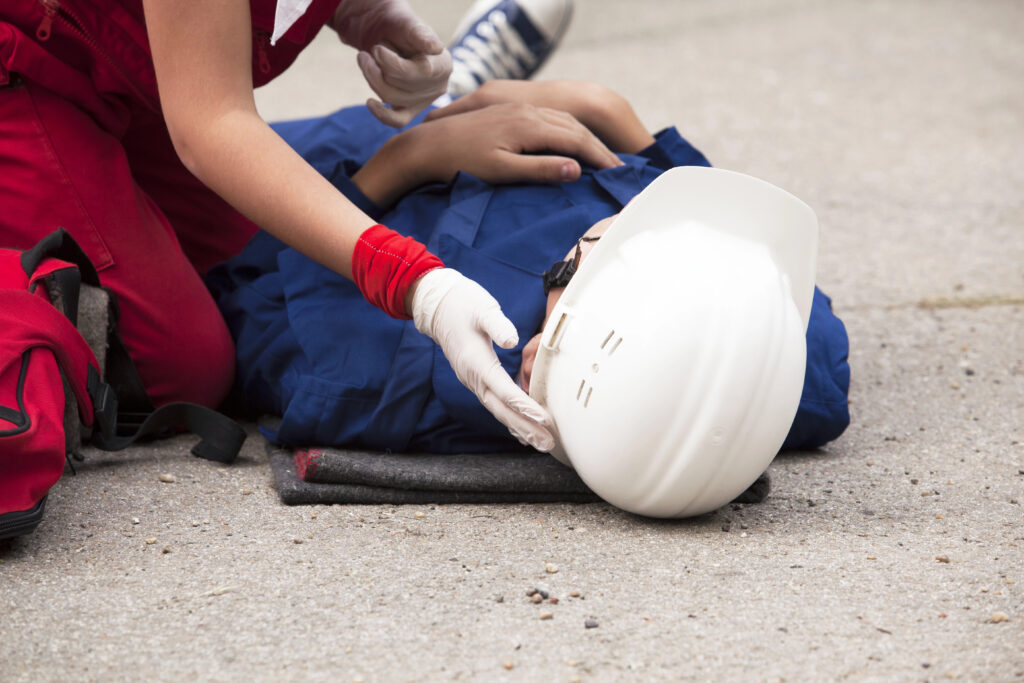How to Prove Fault in a Workplace Accident
When a workplace accident occurs, injured employees are often unsure of their rights and the steps they need to take. While most work-related injuries are covered under workers compensation, some cases require more — particularly when an employer’s negligence is involved or safety protocols were ignored.
In New York, proving fault in a workplace injury can open the door to broader legal options, including a personal injury lawsuit. Knowing how to gather the right evidence, document your injuries, and establish liability is critical to recovering fair compensation.

Workers’ Compensation vs. Proving Fault
Most injured workers are eligible to file a workers compensation claim, regardless of who was at fault. This no-fault system is designed to help workers receive benefits quickly for their medical care, lost wages, and rehabilitation. However, these benefits are often limited and may not fully compensate for long-term suffering or permanent disability.
Proving fault is necessary when:
- An employer fails to provide a safe working environment
- A third party, such as a property owner or contractor, caused the accident
- The incident involves unsafe conditions that violated safety standards or industry regulations
In these cases, proving fault can allow you to pursue a personal injury claim in addition to receiving workers compensation benefits.
Key Considerations When Proving Fault
Proving fault in a workplace accident requires demonstrating that the employer or another party failed to meet their responsibilities, and that this failure directly caused the injuries sustained.
Some key considerations include:
- Did the employer provide reasonable precautions or warning signs?
- Were hazardous materials or wet floors left unaddressed?
- Were safety protocols followed at the time the injury occurred?
- Did workplace conditions violate known safety standards?
If your employer or another party neglected to uphold their duty to provide a safe environment, they may be held legally liable for the accident.
Types of Evidence That Can Support Your Claim
Building a strong case requires the right evidence. This includes both physical evidence and testimony from witnesses or experts.
Common evidence used in workplace injury cases includes:
- Witness statements and witness testimony
- Medical records and documented medical expenses
- Surveillance footage or security camera footage showing the accident scene
- Photos or video evidence of the unsafe conditions
- Accident reports detailing how the accident occurred
- Expert testimony from accident reconstruction specialists
Preserving evidence quickly is essential. As time passes, physical evidence can be lost, and memories fade — making it harder to establish fault or prove negligence.
Common Workplace Accident Scenarios Where Fault May Apply
Certain types of accidents are more likely to involve fault and open the door to compensation beyond what a workers compensation claim can offer. These include:
- Slip and fall incidents due to poor lighting, wet floors, or unsafe surfaces
- Fall injury claims resulting from broken railings or inadequate safety equipment
- Injuries caused by dangerous conditions ignored by the employer
- Exposure to known hazards without proper protective gear
- Accidents involving third-party contractors or subcontractors
In these cases, both the employer and outside parties may share liability, depending on how the accident happened.
Legal Pathways Beyond Workers Compensation
If an employer fails to meet workplace safety obligations, or a third party caused your injuries, you may be able to file a personal injury lawsuit. This allows you to seek full compensation for damages such as:
- Medical expenses not fully covered by insurance
- Lost wages and diminished future earning capacity
- Pain and suffering
- Long-term physical therapy or rehabilitation
- Emotional trauma and reduced quality of life
Unlike a workers comp claim, a personal injury case is fault-based — meaning you must prove that another party’s actions led to your injuries. An experienced attorney can help gather compelling evidence and build a strong case.

Why Legal Representation Matters
Many injured workers hesitate to take legal action, especially while they’re still recovering. However, proving fault in a workplace accident is a complex process that often requires legal expertise. An attorney can:
- Analyze the accident scene
- Obtain medical records and prepare expert witnesses
- Review employer responsibilities and safety violations
- File both a workers compensation claim and personal injury lawsuit where applicable
- Handle negotiations with the insurance company
Legal guidance ensures that your rights are protected and that you pursue every avenue for fair compensation.
Learn more about how to prove fault in a workplace accident. Call Greenstein & Pittari, LLP at (800) 842-8462 to schedule your free, no-obligation consultation. You can also reach us anytime through our contact page. Let us help you take the first step toward justice and recovery.
FAQs: Proving Fault in Workplace Accidents in NYC
What is the difference between a workers compensation claim and a personal injury lawsuit?
Workers compensation provides no-fault benefits, while a personal injury lawsuit requires proving fault and allows for broader compensation, including pain and suffering.
Can I sue my employer for a workplace injury?
You generally can’t sue your employer directly unless they failed to carry required insurance or intentionally caused harm. However, you may be able to sue a third party involved in the accident.
What evidence do I need to prove fault?
You’ll need medical records, witness statements, physical evidence, and possibly surveillance footage. An attorney can help gather and present the right evidence.
How can a fall injury claim be proven?
By showing that the fall occurred due to unsafe conditions, such as wet floors, poor lighting, or a lack of warning signs, and that the employer knew or should have known about the hazard.
Is it worth pursuing a personal injury lawsuit if I already receive workers compensation benefits?
Yes. Workers comp often covers only part of your losses. A personal injury claim may provide compensation for pain and suffering, additional medical costs, and long-term damages.
